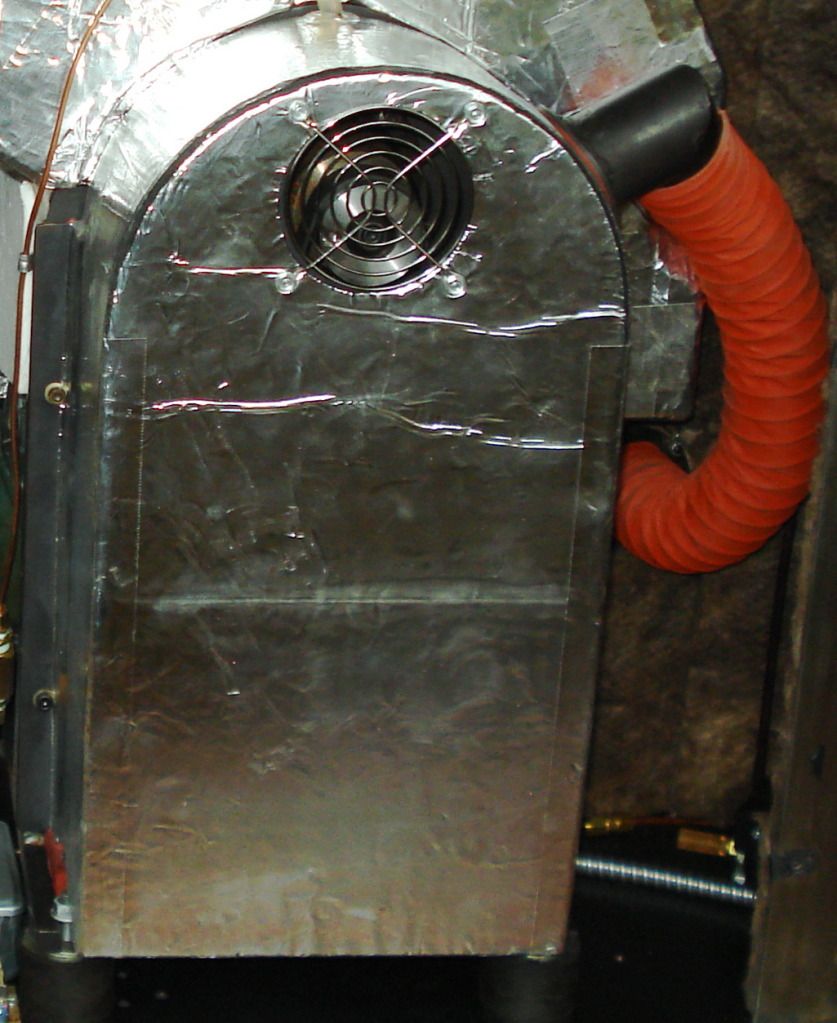Virtually every manufacturer claimed that their composite bearings would work at the 250°C air temperature. They must not have realized that 18,000 rpm was on the faster side which greatly reduced the life of their product. Regular bearing races are too soft for this temperature and speed combination. It takes very little Brinelling which creates a looseness that, at 18K rpm, allows the shaft to vibrate and the bearings self destruct. Note: the faster the speed the smaller the movement of the vibration, all other things being equal. Bearings were repacked with high temperature grease that was measured out in milligrams. Oil bathed bearings were tried. Many iterations of new seals had to be turned because the stock items were intended for ambient temperatures. Most modifications succeeded in improving the longevity; 25 hrs, 55 hrs, 125 hrs, 225 hrs, 320 hrs, and after a couple years it was over 1300 hrs. Not that great, but the client could live with it while we were working on a new blower that is featured in the other blog pages. A specialized bearing manufacturer made a bearing for us that goes like the proverbial bunny. All we have to do is pay them a lot of money. The switch over to our blower design started two years ago. We do not know the MTBF because of the lack of failures (no! no! that is good).
The aim of this blog is to discuss the blower noise that was generated by that first blower compared to what we have today.
The off the shelf blower had an aluminum Belt Guard with a rubber lip that is not shown. The guard resonated and the RoastMaster wore Ear Protectors. Obviously the level of balance is greatly affected by the speed of the 6" Rotor. If that manufacturer recognizes his cover they will realize that they have a problem and then see the solution. Well, they have more problems than that which is why they do well to focus on ambient temperatures. The paint has flaked which reflects badly on the quality of the work.
The output of our design was better than expected therefore we were able to reduce the speed. To improve upon the case design, first, we increased the mass by making the Belt Guard from steel sheet. It was better, or as they say, "Good, but not so good".

Heavier bar stock was screwed to the front and sides to increase the mass and reduce the amplitude of the resonance. The roaster was delivered with that modification but the client still found the noise to be disturbing to the working environment.
In his youth the client was a hot rodder and had some experience with taming unwanted frequencies though I suspect that most of his energy went into making the engine louder.
He covered the Roastaire Belt Guard with an aluminized Butyl Rubber sheet product. It worked so well that the covering panels got the same treatment. The "sound treatment" was so effective that CBC Radio did part of "On the Island" Roastery Interview in front of the working Roastaire.
At the Eptech show Ampco's Rick Gagne discussed such a product that they carry. It is not necessary to cover much more than 25% of the surface to stop the ringing but esthetics would take a beating with less than full coverage. The alternative was to place strips on the interior walls but if the bond fails after a while then that will certainly lead to belt failure. Perhaps we can revisit and find a conclusion after a year - with the help of a freshly roasted coffee.



